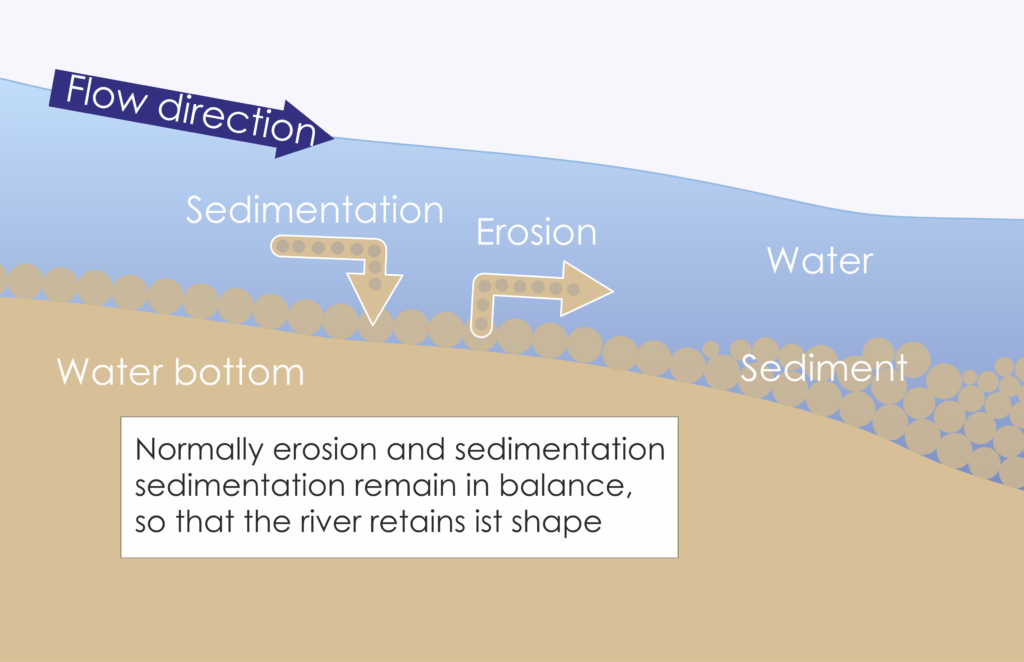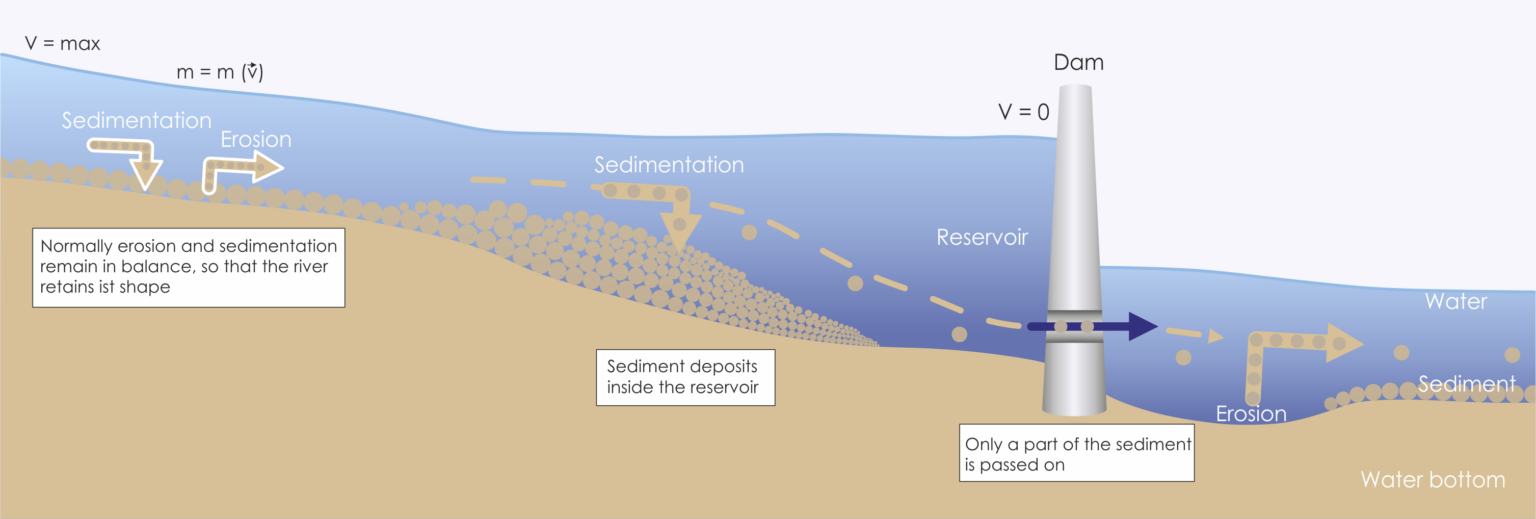Sediment
BASICS
Every flowing water transports sediments. These are an important natural component of the flow process. Sediments settle to the bottom of the watercourse and are eroded again depending on the flow condition. Over the years, an equilibrium is established in the middle and lower reaches of watercourses. The water body essentially retains its shape.


Water bodies are dammed for many reasons. This fundamentally changes the sediment balance. Most of the sediment now settles in the backwater area. Only a small part continues to slide. Accordingly, sedimentation and even siltation occurs in the backwater area. Downstream, the watercourse undergoes massive erosion. For this reason, almost all large watercourses today have a massive sediment shortage, which is not even compensated by currently large artificial sediment additions.
TWO SIDES OF SEDIMENTATION
Sediment is an essential component of the water body. It protects the watercourse from bed and bank erosion. At the same time, it is an important habitat for bottom-dwelling organisms (benthos) and provides bed substrates.
If sediment is retained in reservoirs, sooner or later it restricts their operating space and thus the function of the reservoir, displaces the outflow organs and can even endanger their stability due to its weight and the load on a dam. At the latest then, quick and often costly solutions are indispensable. At the same time, the lack of sediment downstream leads to erosion damage to the watercourse with consequential effects down to the groundwater and estuary areas of the rivers.
To alleviate the sediment shortage, elaborate artificial sediment additions to affected water bodies take place every year. At the same time, reservoir operators face the challenge of addressing excess sediment in the reservoir.
Conventional solutions only partially eliminate the problems and often create new ones, whether reservoir flushing, waterbody modifications or dredging campaigns are used. Many measures are, or would be, extremely expensive or involve costly plant shutdowns, construction, and large water losses. In addition, conventional solutions have considerable ecological consequences due to the flushing processes or the removal of sediment from the flowing water system.
We show that there is another way.

